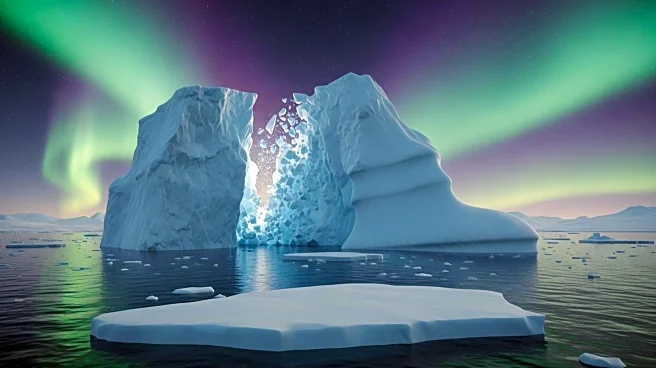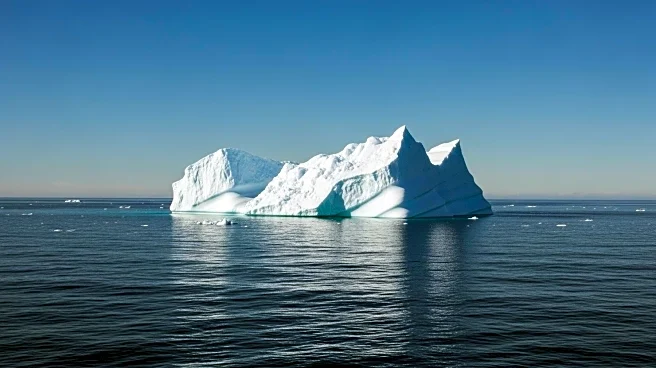What's Happening?
A new study suggests that a mysterious platinum spike found in Greenland's ice cores, previously attributed to a space impact, may instead be the result of a volcanic eruption. The spike, dated to around 12,800 years ago, coincides with the onset of the Younger Dryas, a significant cooling period. Researchers propose that the platinum signature could have originated from a volcanic fissure eruption in Iceland, challenging the hypothesis of an extraterrestrial impact. This finding is based on the chemical analysis of volcanic gas condensates and the timing of the platinum spike.
Why It's Important?
This research has significant implications for understanding past climate events and their triggers. By attributing the platinum spike to volcanic activity rather than a space impact, the study shifts the focus to terrestrial processes in explaining the Younger Dryas cooling. This could alter the scientific narrative about the causes of abrupt climate changes and improve predictions of future climate behavior. Understanding the role of volcanic eruptions in climate shifts is crucial for anticipating potential impacts on modern climate systems.
Beyond the Headlines
The study highlights the importance of re-evaluating existing hypotheses with new data and methodologies. It underscores the complexity of Earth's climate system and the need for interdisciplinary approaches to unravel past events. The research also emphasizes the potential for volcanic activity to influence climate on a global scale, which is a critical consideration for current climate models and future projections.











